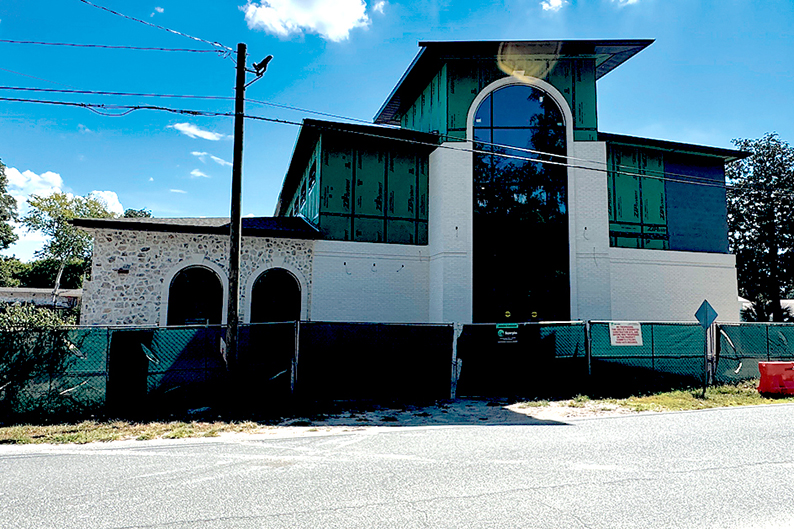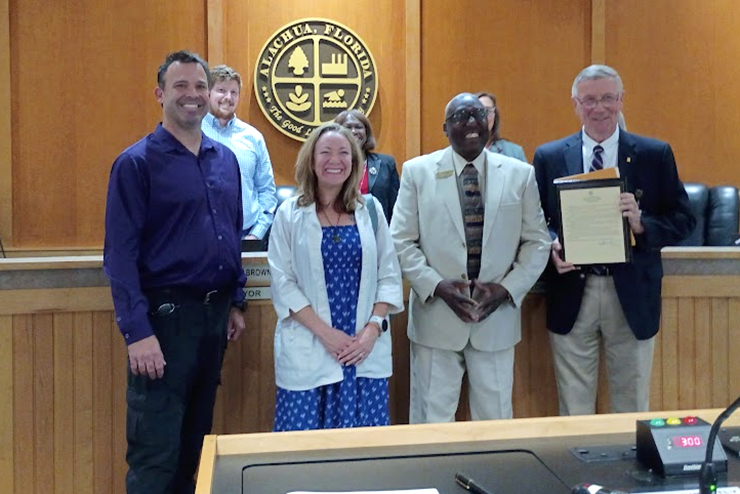
The construction of Newberry’s new City Hall nears completion. Photo by Alachua County Today Staff Photographer
NEWBERRY ‒ The construction of Newberry’s new City Hall is nearing completion, marking a major step in the city’s efforts to centralize government services and improve accessibility for residents and business owners. Since the groundbreaking in September 2024, the two-story, 11,000-square-foot facility has steadily taken shape and is now expected to open later this fall.
For years, residents seeking city services have had to navigate multiple buildings around town. Departments such as Community Development and the Building Department operated out of the Little Red Schoolhouse, while other offices were located across the street in Annex 2 or inside the existing City Hall. The new building is designed to bring all services under one roof, creating a single point of access for residents, developers and business owners.
City officials say the consolidation will streamline services and improve efficiency. The ground floor will house customer-facing departments including Finance, Community Development, Customer Service and the Building Department. The second floor will feature 18 offices and three collaborative open work areas for city staff. Although the building includes an elevator, most customer needs can be met on the ground floor. There will not be private offices for the mayor or commissioners, but space will be available for citizens to meet with them or staff in private when needed.
One of the key features is a 1,246-square-foot Commission Chamber designed to seat more residents during public meetings. An accordion wall will allow the space to expand or contract, making it adaptable for gatherings of different sizes. Conference rooms and updated technology are also being added to improve service delivery.
City leaders stress that the new building has been designed to blend into its surroundings while offering state-of-the-art amenities. “The idea is to make City services easily accessible for our community as we grow,” said Assistant Director of Capital Projects and Facilities Ryan Young.
The $11,000-square-foot project is being managed by Scorpio Construction of Gainesville, with design by Monarch Design Group. City staff members have worked closely with the construction team throughout the process. Once the new facility is finished, the city plans to remodel the existing 3,300-square-foot City Hall building and connect the two structures. A loggia will link them, creating a covered outdoor area with pavers for festivals, farmers markets and other community activities.
The city museum, located in the Little Red Schoolhouse, is also slated for improvements, although those upgrades will follow later.
City Manager Jordan Marlowe emphasized that the project is long overdue. He noted the city waited until the need became pressing before committing taxpayer dollars. He also tentatively identified Nov. 15 as a possible ribbon-cutting date, though officials stressed the timeline remains subject to change.
“Once the building is completed, we will coordinate to get everybody moved in while minimizing any inconvenience to our community,” Young said. An official announcement of the ribbon-cutting is expected within the coming weeks.
With the project nearing completion, Newberry residents can expect a more centralized, efficient government hub—one designed not only to meet current needs but to grow alongside the city in the years ahead.
# # #
Email cwalker@
alachuatoday.com
Add a comment

